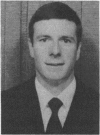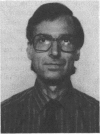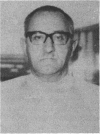Abstract
The maximal aerobic performance (VO2 max) and energy costs of cycling at various power outputs and equivalent road speeds of a highly trained endurance cyclist (age 23.4 yrs, height 1.95 m, weight 73.1 kg), were measured in the laboratory on an eddy-current cycle ergometer, and the physiological responses related to determinations made during a 24 h cycling time trial event, using continuous ECG recording from which estimates of ergogenic demands were obtained. The cyclist covered a distance of 694 km during the event at an average speed of 28.9 km.h-1 which corresponded to an equivalent oxygen cost of 38.5 ml.kg-1 min-1 and represented approximately 55% of his VO2 max. During the event, the cyclist expended an estimated 82,680 kJ of energy, of which approximately 44,278 kJ (54%) were supplied by repeated feedings of liquids, solids and semi-solids and some 38,402 kJ (46%) came from the stored energy reserves which resulted in a 1.19 kg loss of body weight during the event. The energy demands of the activity were more than three times greater than the highest recorded values of severe industrial work, and similar to the hourly rates of expenditure of shorter duration competitive events, but above the highest values reported over other extreme endurance events over the same period of time. The results thus represent near maximal levels of sustainable ergogenic effort by man over a complete 24 h cycle.
Full text
PDF






Images in this article
Selected References
These references are in PubMed. This may not be the complete list of references from this article.
- Brooke J. D., Davies G. J., Green L. F. The effects of normal and glucose syrup work diets on the performance of racing cyclists. J Sports Med Phys Fitness. 1975 Sep;15(3):257–265. [PubMed] [Google Scholar]
- Brooke J. D., Green L. F. The effect of a high carbohydrate diet on human recovery following prolonged work to exhaustion. Ergonomics. 1974 Jul;17(4):489–497. doi: 10.1080/00140137408931379. [DOI] [PubMed] [Google Scholar]
- Costill D. L., Coté R., Fink W. Muscle water and electrolytes following varied levels of dehydration in man. J Appl Physiol. 1976 Jan;40(1):6–11. doi: 10.1152/jappl.1976.40.1.6. [DOI] [PubMed] [Google Scholar]
- Costill D. L., Coté R., Miller E., Miller T., Wynder S. Water and electrolyte replacement during repeated days of work in the heat. Aviat Space Environ Med. 1975 Jun;46(6):795–800. [PubMed] [Google Scholar]
- Costill D. L., Fink W. J. Plasma volume changes following exercise and thermal dehydration. J Appl Physiol. 1974 Oct;37(4):521–525. doi: 10.1152/jappl.1974.37.4.521. [DOI] [PubMed] [Google Scholar]
- Davies C. T., Thompson M. W. Estimated aerobic performance and energy cost of severe exercise of 24 h duration. Ergonomics. 1979 Nov;22(11):1249–1255. doi: 10.1080/00140137908924699. [DOI] [PubMed] [Google Scholar]
- HEDMAN R. The available glycogen in man and the connection between rate of oxygen intake and carbohydrate usage. Acta Physiol Scand. 1957 Oct 22;40(4):305–321. doi: 10.1111/j.1748-1716.1957.tb01499.x. [DOI] [PubMed] [Google Scholar]
- Ivy J. L., Costill D. L., Fink W. J., Lower R. W. Influence of caffeine and carbohydrate feedings on endurance performance. Med Sci Sports. 1979 Spring;11(1):6–11. [PubMed] [Google Scholar]
- Lazure C., Hum W. T., Gibson D. M. Sequence diversity within a subgroup of mouse immunoglobulin kappa chains controlled by the IgK-Ef2 locus. J Exp Med. 1981 Jul 1;154(1):146–155. doi: 10.1084/jem.154.1.146. [DOI] [PMC free article] [PubMed] [Google Scholar]
- Lloyd E. L., Henderson W., Covell B., Bryce G. R. Factors affecting performance during an endurance relay. Br J Sports Med. 1977 Sep;11(3):138–142. doi: 10.1136/bjsm.11.3.138. [DOI] [PMC free article] [PubMed] [Google Scholar]
- O'Hara W. J., Allen C., Shephard R. J., Gill J. W. LaTulippe--a case study of a one hundred and sixty kilometre runner. Br J Sports Med. 1977 Jun;11(2):83–87. doi: 10.1136/bjsm.11.2.83. [DOI] [PMC free article] [PubMed] [Google Scholar]
- Reilly T., Walsh T. J. Physiological, psychological and performance measures during an endurance record for 5-a-side soccer play. Br J Sports Med. 1981 Jun;15(2):122–128. doi: 10.1136/bjsm.15.2.122. [DOI] [PMC free article] [PubMed] [Google Scholar]
- Sengupta A. K., Sarkar D. N., Mukhopadhyay S., Goswami D. C. Relationship between pulse rate and energy expenditure during graded work at different temperatures. Ergonomics. 1979 Nov;22(11):1207–1215. doi: 10.1080/00140137908924695. [DOI] [PubMed] [Google Scholar]
- White J. A., Ford M. A. The carbohydrate maintenance properties of an experimental sports drink. Br J Sports Med. 1984 Jun;18(2):64–69. doi: 10.1136/bjsm.18.2.64. [DOI] [PMC free article] [PubMed] [Google Scholar]
- White J. A., Quinn G., Al-Dawalibi M., Mulhall J. Seasonal changes in cyclists' performance. Part II. The British Olympic track squad. Br J Sports Med. 1982 Mar;16(1):13–21. doi: 10.1136/bjsm.16.1.13. [DOI] [PMC free article] [PubMed] [Google Scholar]
- White J., Ford M. A. The hydration and electrolyte maintenance properties of an experimental sports drink. Br J Sports Med. 1983 Mar;17(1):51–58. doi: 10.1136/bjsm.17.1.51. [DOI] [PMC free article] [PubMed] [Google Scholar]





